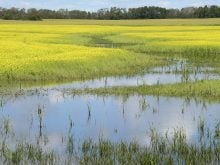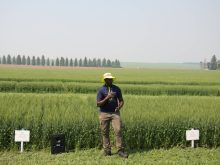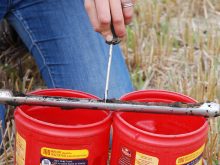Researchers say they have found soil seed banks cannot rescue plant diversity that has been affected by fertilizer use
New research from the University of Oulu in Finland suggests nutrient enrichment of soil seed banks can weaken underground diversity and lower the potential for plants to rely on natural ecosystems.
“From previous research, we know that nutrient enrichment leads to plant diversity loss in above-ground plant communities,” said Anu Eskelinen, of the university’s ecology and genetics unit. “These effects can persist for decades even when nutrient supplies are reduced.
“On the other hand, soil seed banks are suggested to buffer these negative effects on plant diversity because seed banks can maintain species’ populations in the soil, even when the same species are declining or disappearing from above-ground communities. Seed banks (it was thought) could mitigate the negative effects of nutrient enrichment and help in recovery.”
Read Also

New program aims to support plant-based exports to Asia
Understanding the preferences of consumers in Taiwan and how they differ from Indonesia or Malaysia isn’t easy for a small company in Saskatchewan.
Eskelinen and her colleague and coauthor of the study, Lauren Sullivan from Michigan State University, used the globally distributed Nutrient Network experiment to test if seed banks could mitigate the negative effects of fertilizers and maintain natural plant diversity. The results showed that soil seed banks cannot rescue plant diversity that has been affected by fertilizer use.
The research team’s focus was to collect seed bank data from seven grassland sites on four different continents. They included tundra grassland in northern Finland, semiarid grassland in Burrawan, New South Wales, Australia, a grassland sanctuary in Portugal, grasslands in Las Chilcas and Potrok Aike in Argentina, and grasslands in Idaho and Minnesota in the United States. They are part of the global research co-operative called Nutrient Network (NutNet) that consists of more than 130 grassland sites globally.
“Different Nutrient Network sites that participated in our study are located in different parts of the world,” said Eskelinen. “Each site therefore has its own flora and is likely to have its own vulnerable species. However, it would be interesting to study whether there are more general trends (such as) whether native species are more vulnerable than exotics. Species-specific differences in vulnerability depend on the type of seeds, i.e., seed traits. For example, seeds vary in thickness of seed coat, which could affect their vulnerability, but we do not know how.”
Eskelinen said nutrient enrichment decreases diversity because it increases vegetation biomass and therefore competition by plant species for light. As a result, species that lose out to light competition, typically small species, are those that can be lost, and their seeds are no longer available to the seed bank. Successful plant species continue to deposit seeds into the bank, allowing the species to become more abundant and more dominant over time, changing the diversity profile of the above-ground plants.
She said that fertilization can also benefit pathogenic fungi in the soil, leading to further loss of seeds and a change in the profile of above-ground communities.
In addition to the influence of fertilizers on soil seed banks, the influence of grazing animals was also incorporated at some sites.
“At some of our study sites, grazing animals means livestock and at other sites it means native grazers, like deer,” she said. “In our Finnish tundra site, it means semi-domesticated reindeer.”
The exclusion of grazing animals modified the effects of nutrient enrichment in the number of seeds and in the variety of seeds stored in the seed bank.
“Nutrient enrichment increased the abundance especially of grass seeds in the seed banks, but only in the presence of grazers,” she said. “This is likely because, in the absence of grazing, a thick litter layer prevents grass seeds from entering the seed banks. This result reflects the joint effects of nutrient enrichment and grazing on the species composition in above-ground vegetation, which then was reflected in seed banks.”
She said although grazing did not affect seed bank richness or diversity, grazing could affect plant species abundance and it is important to consider the influences of grazing species when assessing nutrient enrichment effects on seed banks.
“In general, other studies have shown that grazing by large mammalian herbivores maintains plant diversity.”
She said in the current study, they did not find effects of grazing on seed bank richness and diversity, even though it was what they expected.
“There are some likely reasons for this,” she said. “For example, grazing pressure at some of the seven grassland sites in this study is pretty low. When there are not that many grazing animals, there is no effect from excluding grazers. At some sites, including my own site in Finnish tundra, grazing pressure is higher and at those sites there was also a trend that grazing mitigated the negative effect of nutrient enrichment on the richness in seed banks. So, the positive effects of grazing on plant diversity can also be reflected to seed banks but more research is needed on this.”
In regions where there has been a clear loss of plant diversity, restoration would mean adding the seeds of those plant species that were once present in the communities prior to nutrient enrichment.
“The seeds need to be added by people because once they become lost from the seed banks there is no other way to get those lost species back.”
The research was recently published in the journal Nature Communications.

















